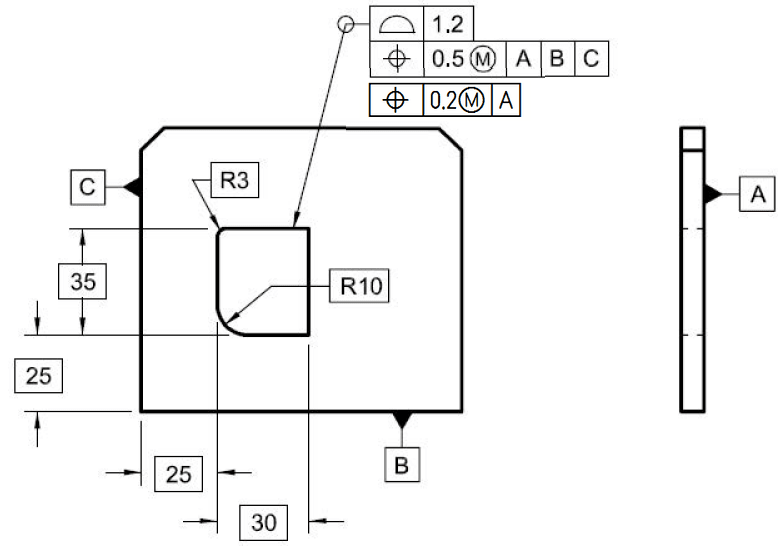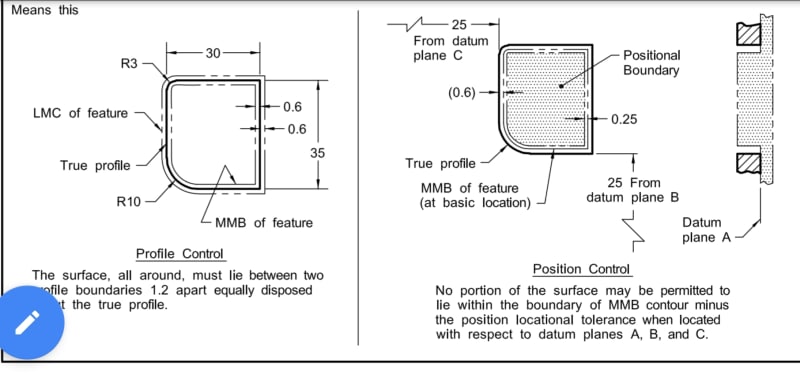I hope it is not too late to get back to Evan's original question about the orientation refinement. What is not so clear to me is - since the 0.2(M)|A position uses the boundary interpretation to refine orientation, how will the boundary look like in this case? If it should be at uniform distance of 0.1 from the MMB of the complex feature, will it not make the positional boundary of the second segment (at uniform distance of 0.25) redundant?
Edit:
I made a check by myself and discovered that the position tolerance WRT datums will not be redundant, because the refinement position boundary floats together with the profile tolerance. However, I also discovered that the resulting tolerance zone of the orientation is not obvious from the specified value and it actually equals the profile tolerance+ half of the position tolerance refinement. Attached is a sketch displaying it. I modified the tolerance values to make the zones more visible:
*profile is within 2.
*position WRT datums A,B,C is within 1.4.
*position as orientation refinement is 1.
Displayed is one possible location of the tolerance zones. The dashed thick lines are the profile tolerance zone, the dashed orange thin profile is the refinement boundary, the continuous internal profile is the virtual condition boundary established by the position tolerance WRT to the datums. Maximum orientation deviation is 2.5. I find the fact that it's not directly accepted from the refinement FCF disturbing.
Edit: if my analysis is correct, the "refinement" tolerance zone ia actually larger than the Profile specification used to define form. Then it is not really a refinement. I would
currently answer Evan that it's not a good application since it fails.




![[profile] [profile] [profile]](/data/assets/smilies/profile.gif) ][2.9(U)0.85][A][C]
][2.9(U)0.85][A][C]